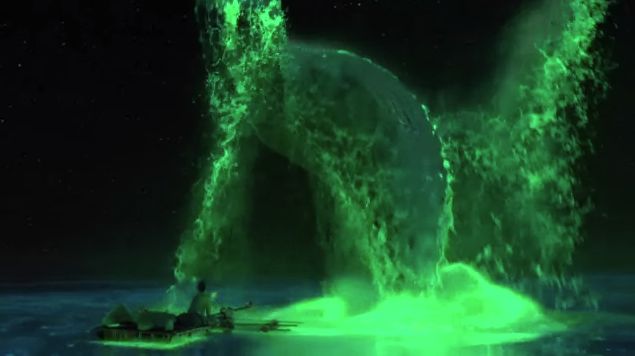Ang Lee on high frame rate: 'People have mixed feelings right now'
Life of Pi director gives his take

Ben Affleck may have taken home the Best Picture Oscar for Argo, but one nominee has the tech side of filmmaking buzzing weeks after the curtain at Dolby Theatre closed.
Best Director winner Ang Lee triumphed for his saga Life of Pi, and while the film failed to completely capture the Academy's heart, its immersive dose of 3D helped nab the flick a few statuettes, including Cinematography, Visual Effects and Lee's director nod. The film also grabbed Bafta honors for Cinematography and Special Visual Effects.
3D, as Pi and fellow CG film The Hobbit attest, continues to break out of the gimmicky mold some place it in and into highly regarded pieces of cinema.
Lee opened up on his thoughts on 3D and gave a cautious take on the high frame rate (HFR) format during a group interview (reported by Screen Rant) prior to the International 3D Society Awards last month.
3D future
Though filmmakers are still perfecting the modern 3D medium, Lee said he envisions a time when viewers forget they're watching a film that uses the special effect and are instead simply enjoying a movie.
"For Life of Pi, I'd like [movie watchers] to just go along with the story and not think about the 3D - as they walk out, they forget to take off their glasses," he said.
"But I think we're in a transitional time. Maybe in the future it won't have to be that way. Once we get used to it - it'll be something else."
Get daily insight, inspiration and deals in your inbox
Sign up for breaking news, reviews, opinion, top tech deals, and more.
Lee and 3D are likely to walk hand-in-hand for many films to come, perhaps even in a Crouching Tiger, Hidden Dragon like martial arts film down the road. Not only would the action pop, the dramatic effects of 3D are, for Lee, enticing.
HFR here to stay?
HFR, a technique that amps the number of frames used from 24 to 48, was implemented to success (from a filmmaker's perspective) in The Hobbit. "The Middle-earth picture filmed in both 3D and HFR, something that's never before been attempted.
The decision to use the rapid frame speeds greatly improved the movie's CG animation - character details were sharper and more perceptible -- according to Joe Letteri, senior visual effects supervisor for the film.
3D carried over so well into Life of Pi, it might seem a natural progression for Lee to marry it with HFR.
The director, however, is more cautious, echoing some audience concerns.
"People have mixed feelings right now," Lee said. "I wonder how much HFR is ahead of its time or people simply don't like the look. It's very hard to say.
"We associate it with 'video' looks - which people associate with bad filmmaking. It doesn't mean that the media itself is not good. It's very hard to say but making Life of Pi I struggled with frame rate because you don't want the 3D to be jittery and we're constantly rocking in the ocean.
"And sometimes when things go too fast I could not see the eyes - so HFR might be [an] idea.
"But sometimes when I find out how people feel about it, I think it's possible. We're in the early stages of 3D filmmaking - so we have a lot to learn."
Michelle was previously a news editor at TechRadar, leading consumer tech news and reviews. Michelle is now a Content Strategist at Facebook. A versatile, highly effective content writer and skilled editor with a keen eye for detail, Michelle is a collaborative problem solver and covered everything from smartwatches and microprocessors to VR and self-driving cars.
